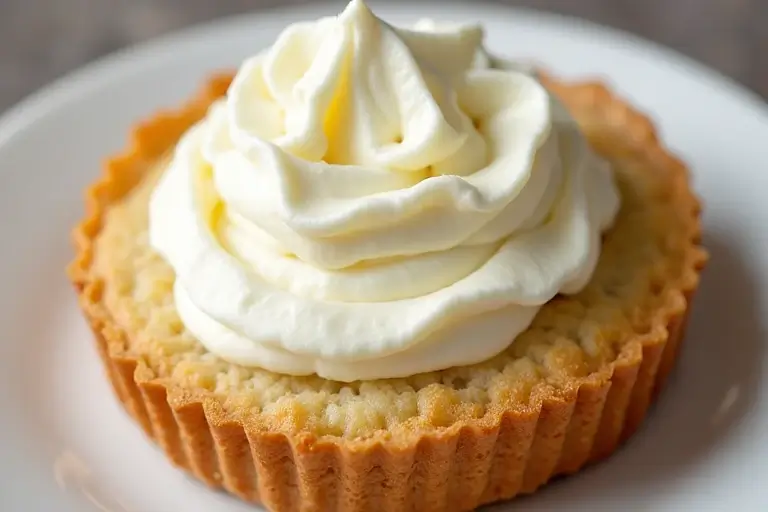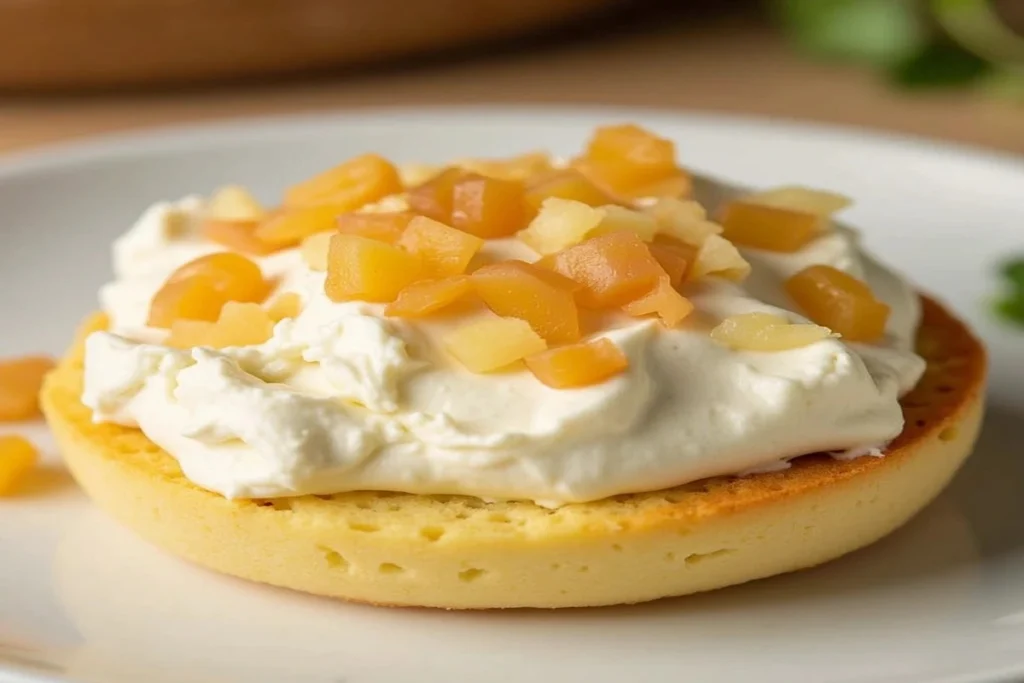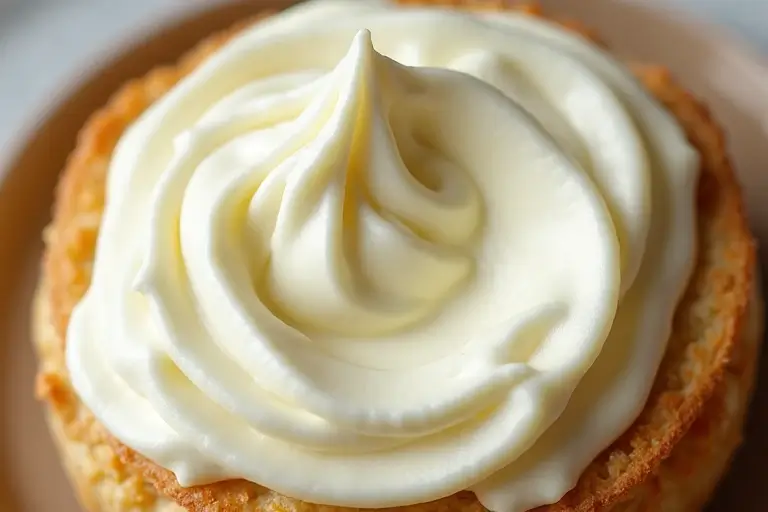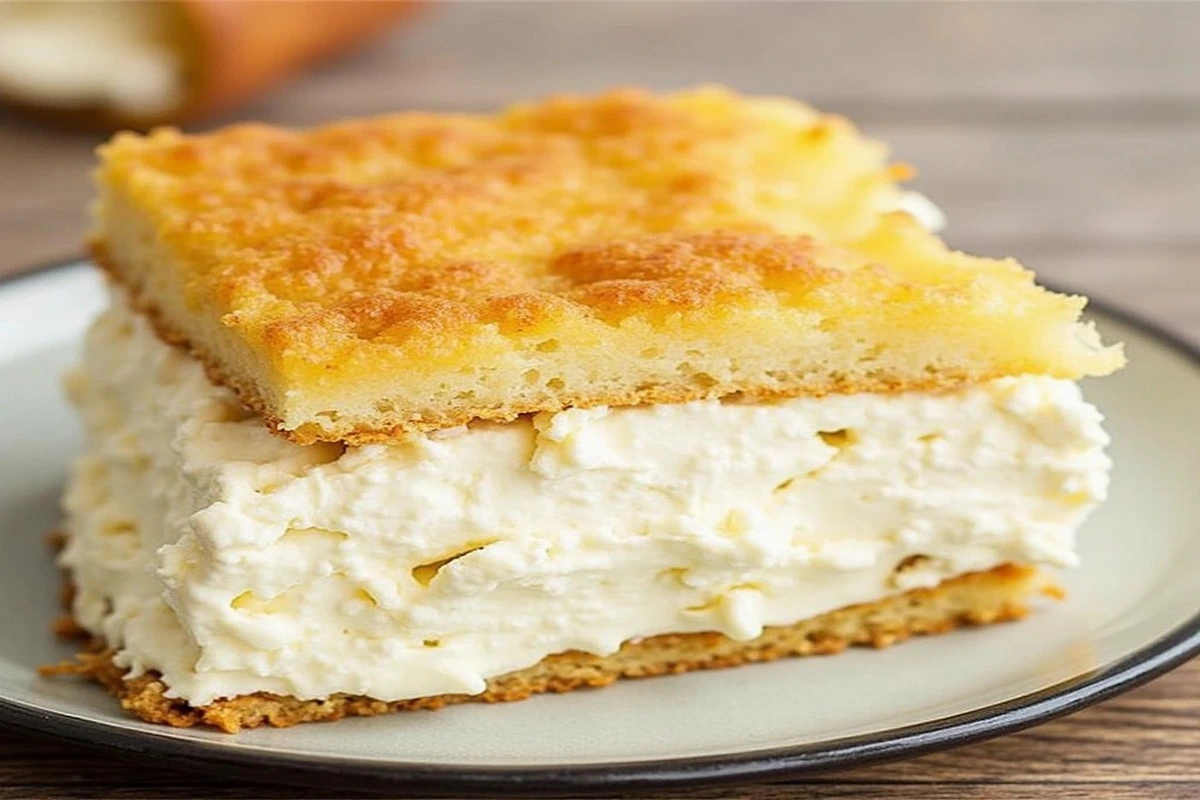Cream cheese filling is a decadent and versatile ingredient that can elevate desserts, breakfast treats, and savory dishes alike. Whether you are crafting a silky cheesecake, fluffy pastries, or even savory stuffed mushrooms, mastering this filling is essential for home cooks and professionals alike. In this guide, we’ll dive deep into what makes it so special, how to perfect it, and creative ways to use it in your recipes.
What Is Cream Cheese Filling Made From?
The core of any recipe is its simplicity. Most variations include a handful of essential ingredients:
- Cream Cheese: The foundation of the filling, delivering tangy richness.
- Powdered Sugar: Adds sweetness and smooth texture.
- Vanilla Extract: Enhances flavor with warm, aromatic notes.
- Heavy Cream or Milk: This ensures a creamy, spreadable consistency.
For more elaborate recipes, additional ingredients like lemon juice, spices, or chocolate can be included to tailor the flavor to specific dishes.
The Origins and Evolution of Cream Cheese
Cream cheese has a long and fascinating history that dates back to the 16th century in Europe. Originally, it was a fresh, soft cheese produced in small batches by farmers. Over time, cream cheese became a staple in American kitchens, thanks to industrial advancements in the 19th century. In 1872, William Lawrence of Chester, New York, accidentally developed a richer and creamier version of cheese, leading to the commercial production of what we now recognize as cream cheese.
By the early 20th century, cream cheese gained popularity in baking and desserts, evolving into a key ingredient for cheesecakes and other confections. Today, it’s widely available and used worldwide, offering a versatile base for countless dishes.
Why Use Cream Cheese Filling?
Offers an ideal balance of tangy and sweet flavors, making it perfect for both sweet and savory dishes. It pairs beautifully with baked goods such as cakes, cupcakes, and cinnamon rolls. Additionally, it can serve as a dip, a topping, or even a base for appetizers.
For inspiration, you can check this guide to enhancing your baking skills with cream cheese from Taste of Home.
Step-by-Step Guide to Making Cream Cheese Filling

Ingredients You’ll Need:
- 8 ounces of cream cheese (softened)
- 1 cup powdered sugar
- 1 teaspoon vanilla extract
- 2 tablespoons heavy cream or milk
Directions:
- Prepare the Cream Cheese: Allow the cream cheese to reach room temperature. This ensures a smooth, lump-free texture.
- Mix the Ingredients: In a mixing bowl, combine the softened cream cheese and powdered sugar. Beat with an electric mixer until smooth.
- Add Vanilla Extract: Stir in the vanilla extract for added flavor.
- Adjust the Consistency: Gradually add heavy cream or milk until the filling reaches your desired consistency.
Pro tip: Chill the filling for at least 15 minutes before use. This helps it set and makes it easier to pipe or spread.
Common Mistakes to Avoid
- Skipping Room Temperature Ingredients: Cold cream cheese can lead to a lumpy mixture.
- Overmixing: This can cause the filling to become too runny.
- Using Granulated Sugar: Always opt for powdered sugar for a smoother texture.
What Can You Mix with Cream Cheese?
One of the best features is its adaptability. Here are a few creative mix-ins:
- Citrus Zest: Lemon, lime, or orange zest for a refreshing kick.
- Spices: Cinnamon, nutmeg, or cardamom to add warmth.
- Chocolate Chips: Mini chips blend seamlessly without overpowering the filling.
- Fruit Purees: Strawberry, raspberry, or mango purees for a fruity twist.
- Extracts: Almond, maple, or coconut extracts infuse unique flavors.
Global Variations of Cream Cheese Filling
While is widely known in American and European cuisines, it has taken on unique forms in other parts of the world:
- Japan: Japanese-style cheesecakes use a lighter, fluffier cream cheese filling, often blended with whipped egg whites and cornstarch for a souffle-like texture.
- Italy: Tiramisu incorporates mascarpone cheese, a close cousin of cream cheese, to create a rich and creamy dessert layer.
- Middle East: Cream cheese fillings are used in pastries like baklava, often paired with pistachios and honey for added sweetness.
- India: Cream cheese-inspired fillings are incorporated into sweet dishes like sandesh and rasgulla, blending traditional dairy with modern twists.
Creative Uses for Cream Cheese Filling
1. Classic Cheesecakes
The foundation of every great cheesecake lies in its cream cheese filling. Use the recipe above as a base and add eggs for structure. For a no-bake option, mix it with whipped cream and set in a graham cracker crust.
2. Pastries and Desserts
Use cream cheese filling as a stuffing for croissants, Danish pastries, or turnovers. It also works wonderfully in cake layers or as a frosting for carrot cakes and red velvet cupcakes.
3. Savory Dishes
Mix the filling with herbs, garlic, and spices for a savory spread or dip. Use it to stuff jalapeño poppers or mushrooms or as a base for savory tarts. Add crumbled bacon for a smoky twist.
4. Breakfast Boosters
Spread cream cheese filling on bagels, pancakes, or waffles for a creamy and tangy addition to your morning meal. Pair it with fresh berries, banana slices, or a drizzle of honey for extra flavor.
5. Layered Desserts
Create indulgent parfaits by layering with crumbled cookies, granola, or fruit compote. These make perfect individual desserts for parties or gatherings.
6. Cake Pops and Truffles
Combine crumbled cake with cream cheese filling to create moist cake pops or rich truffles. Coat them with melted chocolate for a decadent treat.
7. Dips for Fruits and Crackers
Whip cream cheese filling with a bit of marshmallow fluff or yogurt to create a dip for fruit trays or graham crackers. Add a swirl of peanut butter for an extra touch of indulgence.
How Do You Make Cream Cheese Filling Thicker?
There are several methods to thicken your cream cheese filling:
- Chill It: Refrigeration naturally firms up the filling.
- Add Cornstarch or Flour: A small amount can thicken the filling without altering the flavor. Use sparingly to avoid a gritty texture.
- Use Gelatin: Dissolve unflavored gelatin in warm water and mix it into the filling for a firmer set, ideal for layered desserts.
- Incorporate Butter: Whipped butter can add firmness while maintaining a creamy texture.
- Reduce Liquid: Limit the amount of cream or milk you add during preparation.

Advanced Techniques for Flavoring and Texturing
To take your cream cheese filling to the next level, consider these advanced tips:
Infused Flavors
- Soak vanilla beans in heavy cream overnight for a luxurious flavor.
- Create herbal infusions like lavender, mint, or basil by steeping the herbs in milk or cream before mixing.
Whipped Texture
- Beat the cream cheese filling at medium-high speed to introduce air for a lighter texture. This technique works well for fillings used in layer cakes.
- Fold in whipped cream or mascarpone cheese for a mousse-like consistency.
Layering with Other Ingredients
- Use ganache as a base layer to complement cakes.
- Add a layer of jam, lemon curd, or fruit preserves for contrasting textures and flavors.
- Sprinkle crushed nuts, graham crackers, or toasted coconut for added crunch.
Healthier Variations
For those looking to make a healthier version of cream cheese filling, here are some adjustments you can try:
Low-Calorie Cream Cheese Filling
- Use low-fat or non-fat cream cheese.
- Replace powdered sugar with a natural sweetener like stevia, monk fruit, or erythritol.
- Mix in Greek yogurt for added creaminess and protein.
Dairy-Free or Vegan
- Substitute almond or soy-based cream cheese alternatives.
- Use coconut or almond milk instead of heavy cream.
- Sweeten with maple syrup or agave nectar for a natural, plant-based touch.
Protein-Packed Filling
- Mix in a scoop of protein powder (vanilla works best) to make a filling suitable for post-workout snacks or high-protein desserts.
- Add nut butters like almond or peanut butter for extra richness and protein.
Decorating with Cream Cheese Filling
Piping Techniques
The cream cheese filling holds its shape well when piped, making it ideal for decorating cakes and cupcakes. Use a star tip for elegant swirls or a round tip for a smooth finish. Chill the filling slightly for cleaner edges during piping.
Filling Centerpieces
Hollow out cupcakes, donuts, or pastries and fill them with cream cheese for a delightful surprise. Use a piping bag with a long nozzle for precision.
Garnishing
Dust with cocoa powder, cinnamon, or edible glitter for a decorative touch. Fresh fruit slices, chocolate shavings, or candied nuts can add visual appeal and flavor.
Using Cream Cheese Filling in Seasonal Recipes

Fall Favorites
- Pumpkin Rolls: Swirl cream cheese filling inside a spiced pumpkin sponge. Dust with powdered sugar before serving.
- Apple Crumble Tarts: Add a layer beneath the spiced apples for an extra creamy element.
Winter Comforts
- Eggnog Cheesecake: Infuse your with nutmeg and rum extract for a holiday treat.
- Hot Cocoa Dip: Whisk cream cheese filling with marshmallow fluff and cocoa powder. Serve with cookies or pretzels.
Spring Delights
- Strawberry Shortcakes: Layer with macerated strawberries and fluffy biscuits.
- Lemon Bars: Use cream cheese filling as the base for a tangy lemon topping and garnish with zest.
Summer Treats
- Berry Parfaits: Alternate layers of fresh berries, granola, and honey.
- Key Lime Cheesecake Bites: Infuse with lime zest and juice for refreshing mini desserts.
Frequently Asked Questions
What is Philadelphia Cream Cheese Filling?
Philadelphia is a pre-made, ready-to-use product designed for convenience. While it’s quick and reliable, making your own allows for greater control over flavor and texture.
How Can I Store Cream Cheese Filling?
Store the filling in an airtight container in the refrigerator for up to five days. For longer storage, freeze it for up to three months and thaw it before use.
Can You Substitute Cream Cheese in Recipes?
Yes, but the flavor and texture will vary. Mascarpone or ricotta can work as substitutes, but they lack the tanginess of cream cheese.
Why Is My Cream Cheese Filling Too Runny?
If your filling is too runny, it may be due to overmixing or adding too much liquid. Chilling the mixture or adding cornstarch can help.
Can I Make Cream Cheese Filling Vegan?
Yes, substitute regular cream cheese with vegan alternatives like almond or soy-based cream cheese, and use plant-based milk.
Conclusion
Cream cheese filling is a cornerstone ingredient that enhances countless dishes with its creamy texture and versatile flavor. By following the tips and recipes in this guide, you can master this essential filling and unleash your creativity in the kitchen. Whether you’re making classic desserts, experimenting with savory dishes, or customizing flavors to suit your tastes, it is a reliable companion. Start experimenting today and transform your culinary creations into crowd-pleasing masterpieces.
Looking for even more snack-safe recipes? Don’t miss our Gluten Free Cheese Stick guide packed with brand tips and DIY options.
PrintCream Cheese Filling: The Ultimate Guide to Perfecting This Versatile Ingredient
- Total Time: 10 min
- Yield: 1 1/2 cups 1x
- Diet: Vegetarian
Description
This smooth and tangy cream cheese filling is perfect for layering in cakes, stuffing pastries, filling cupcakes, or swirling into desserts. Sweet, creamy, and easy to make in minutes.
Ingredients
8 oz cream cheese, softened
1/4 cup unsalted butter, softened
1 cup powdered sugar
1 tsp vanilla extract
Pinch of salt
Instructions
1. In a medium bowl, beat softened cream cheese and butter together until light and fluffy.
2. Add powdered sugar, vanilla extract, and a pinch of salt.
3. Beat on medium-high speed for 2–3 minutes until smooth and creamy.
4. Use immediately or refrigerate in an airtight container until ready to use.
Notes
Great for piping into pastries, spreading between cake layers, or filling whoopie pies.
Let come to room temperature and re-whip briefly before using if chilled.
Add lemon zest or almond extract for a flavor twist.
- Prep Time: 10 min
- Cook Time: 0 min
- Category: Filling
- Method: No-Bake
- Cuisine: American
Nutrition
- Serving Size: 2 tbsp
- Calories: 130
- Sugar: 12g
- Sodium: 60mg
- Fat: 9g
- Saturated Fat: 6g
- Unsaturated Fat: 3g
- Trans Fat: 0g
- Carbohydrates: 13g
- Fiber: 0g
- Protein: 1g
- Cholesterol: 25mg
Keywords: cream cheese filling, cake filling, cupcake filling, frosting alternative

